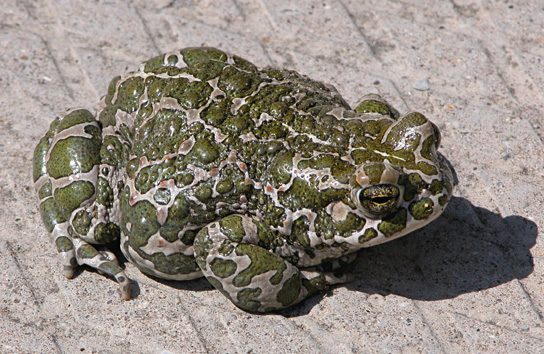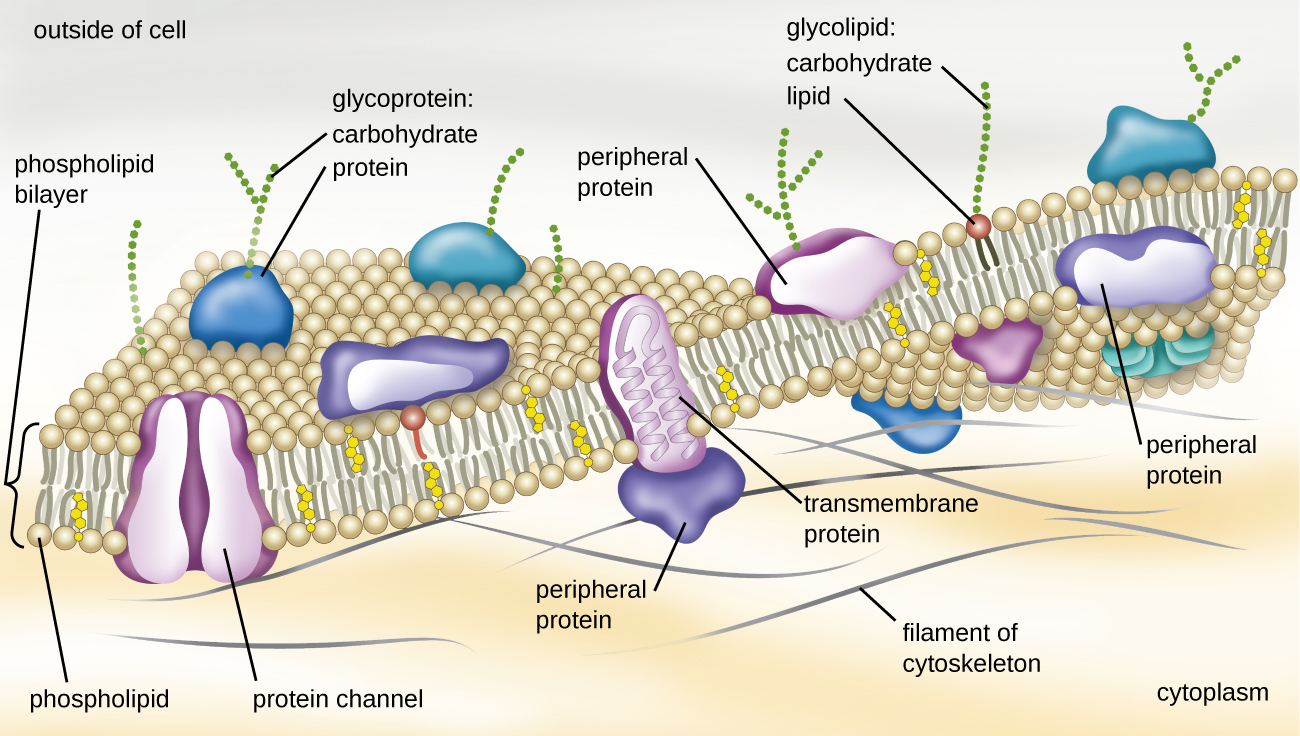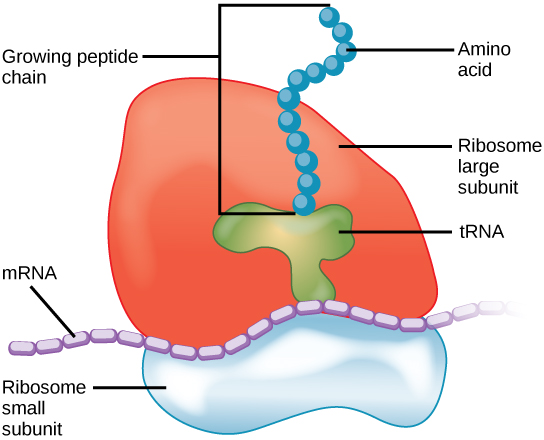3.3: Cells as Living Things
- Page ID
- 31774
Learning Objectives
- Identify and describe the properties of life
- Identify the major parts of all cells and their functions
Biology is the science that studies life, but what exactly is life? This may sound like a silly question with an obvious response, but it is not always easy to define life. For example, virology studies viruses, which exhibit some of the characteristics of living entities but lack others. It turns out that although viruses can attack living organisms, cause diseases, and even reproduce, they do not meet the criteria that biologists use to define life. Consequently, virologists are not biologists, strictly speaking. Similarly, some biologists study the early molecular evolution that gave rise to life; since the events that preceded life are not biological events, these scientists are also excluded from biology in the strict sense of the term.
From its earliest beginnings, biology has wrestled with three questions: What are the shared properties that make something “alive”? And once we know something is alive, how do we find meaningful levels of organization in its structure? And, finally, when faced with the remarkable diversity of life, how do we organize the different kinds of organisms so that we can better understand them? As new organisms are discovered every day, biologists continue to seek answers to these and other questions.
Properties of Life
All living organisms (whether they are bacteria, archaea or eukaryote) share several key characteristics, properties or functions: order, sensitivity or response to the environment, reproduction, growth and development, regulation (including homeostasis), energy processing, and evolution with adaptation. When viewed together, these seven characteristics serve to define life.
Order
Organisms are highly organized, coordinated structures that consist of one or more cells. Even very simple, single-celled organisms are remarkably complex: inside each cell, atoms make up molecules; these in turn make up cell organelles and other cellular parts. In multicellular organisms (Figure \(\PageIndex{1}\)), similar cells come together to form tissues. Tissues, in turn, collaborate to create organs (body structures with a distinct function). Organs work together to form organ systems.

Sensitivity or Response to Stimuli
Organisms respond to diverse stimuli. For example, plants can bend toward a source of light, climb on fences and walls, or respond to touch (Figure \(\PageIndex{2}\)). Even tiny bacteria can move toward or away from chemicals (a process called chemotaxis) or light (phototaxis). Movement toward a stimulus is considered a positive response, while movement away from a stimulus is considered a negative response.

 Video: Watch this video to see how plants respond to a stimulus—from opening to light, to wrapping a tendril around a branch, to capturing prey.
Video: Watch this video to see how plants respond to a stimulus—from opening to light, to wrapping a tendril around a branch, to capturing prey.
Reproduction
Single-celled organisms reproduce by first duplicating their DNA, and then dividing it equally as the cell prepares to divide to form two new cells. Multicellular organisms often produce specialized reproductive germline cells that will form new individuals. When reproduction occurs, genes containing DNA are passed along to an organism’s offspring. These genes ensure that the offspring will belong to the same species and will have similar characteristics, such as size and shape.
Growth and Development
Organisms grow and develop following specific instructions coded for by their genes. These genes provide instructions that will direct cellular growth and development, ensuring that a species’ young (Figure \(\PageIndex{3}\)) will grow up to exhibit many of the same characteristics as its parents.

Regulation
Even the smallest organisms are complex and require multiple regulatory mechanisms to coordinate internal functions, respond to stimuli, and cope with environmental stresses. Two examples of internal functions regulated in an organism are nutrient transport and blood flow. Organs (groups of tissues working together) perform specific functions, such as carrying oxygen throughout the body, removing wastes, delivering nutrients to every cell, and cooling the body. A special type of internal regulation is homeostasis.
In order to function properly, cells need to have appropriate conditions such as proper temperature, pH, and appropriate concentration of diverse chemicals. These conditions may, however, change from one moment to the next. Organisms are able to maintain internal conditions within a narrow range almost constantly, despite environmental changes, through homeostasis (literally, “steady state”)—the ability of an organism to maintain constant internal conditions. For example, an organism needs to regulate body temperature through a process known as thermoregulation. Organisms that live in cold climates, such as the polar bear (Figure \(\PageIndex{4}\)), have body structures that help them withstand low temperatures and conserve body heat. Structures that aid in this type of insulation include fur, feathers, blubber, and fat. In hot climates, organisms have methods (such as perspiration in humans or panting in dogs) that help them to shed excess body heat.

Energy Processing
All organisms use a source of energy for their metabolic activities. Some organisms capture energy from the sun and convert it into chemical energy in food; others use chemical energy in molecules they take in as food (Figure \(\PageIndex{5}\)).

Evolution with Adaptation
Evolution and adaptation rely on the cell's ability to copy its DNA (replication) and give that copy to the next generation (reproduction). However, this copying is sometimes carried out with mistakes (mutations). Chemicals and other mutagens (anything that can cause a mutation) can also cause mistakes that will potentially be passed down. These mutations are often though of as bad, but it depends on which piece of information was affected and how. Sometimes these mistakes give advantages to the organism- like antibiotic resistance- that can allow the organism to adapt and overcome obstacles. We will discuss the mutations and how their changes play out further in later chapters.
Exercise \(\PageIndex{1}\)
- What connects all seven properties or characteristics of life?
- Do all organisms display the seven properties of life in the same way?
Construction of a cell
Cell theory states that the cell is the fundamental unit of life. However, cells vary significantly in size, shape, structure, and function. At the simplest level of construction, all cells possess a few fundamental components. These include cytoplasm (a gel-like substance composed of water and dissolved chemicals needed for growth), which is contained within a plasma membrane (also called a cell membrane or cytoplasmic membrane); within the cytoplasm are one or more chromosomes, which contain the genetic blueprints of the cell; and ribosomes, parts used for the production of proteins.
The Cytoplasm
The cytoplasm is the entire region of a cell surrounded by the plasma membrane. It is made up of nutrients, enzymes and other chemicals suspended in the gel-like cytosol, and the cytoskeleton. Even though the cytoplasm consists of 70 to 80 percent water, it has a semi-solid consistency, which comes from the proteins within it. However, proteins are not the only organic molecules found in the cytoplasm. Glucose and other simple sugars, polysaccharides, amino acids, nucleic acids, fatty acids, and derivatives of glycerol are found there, too. Ions of sodium, potassium, calcium, and many other elements are also dissolved in the cytoplasm. Many metabolic reactions, including protein synthesis, take place in the cytoplasm.
Plasma Membrane
All cells (prokaryotic and eukaryotic) have a plasma membrane (also called cytoplasmic membrane or cell membrane) that exhibits selective permeability, allowing some molecules to enter or leave the cell while restricting the passage of others. The structure of the plasma membrane is often described in terms of the fluid mosaic model, which refers to the ability of membrane components to move fluidly within the plane of the membrane. It is also a reference to the mosaic-like composition of the components, which include a diverse array of lipid and protein components (Figure \(\PageIndex{6}\)).

The plasma membrane structure of most bacterial and eukaryotic cell types is a bilayer composed mainly of phospholipids formed with ester linkages and proteins. These phospholipids and proteins have the ability to move laterally (side-to-side) within the plane of the membranes as well as between the two phospholipid layers (less common). The membrane also has a lot of flexibility warp and flex into or away from the cell's contents which helps with in cells that lack a cell wall.
The plasma membrane of eukaryotic cells is similar in structure to the prokaryotic plasma membrane in that it is composed mainly of phospholipids forming a bilayer with embedded peripheral and integral proteins (Figure \(\PageIndex{6}\)). These membrane components move within the plane of the membrane according to the fluid mosaic model. However, unlike the prokaryotic membrane, eukaryotic membranes contain sterols, including cholesterol, that alter membrane fluidity. Additionally, many eukaryotic cells contain some specialized lipids, including sphingolipids, which are thought to play a role in maintaining membrane stability as well as being involved in signal transduction pathways and cell-to-cell communication.
Archaeal membranes are fundamentally different from bacterial and eukaryotic membranes in a few significant ways. First, archaeal membrane phospholipids are formed with ether linkages, in contrast to the ester linkages found in bacterial or eukaryotic cell membranes. Second, archaeal phospholipids have branched chains, whereas those of bacterial and eukaryotic cells are straight chained. Finally, although some archaeal membranes can be formed of bilayers like those found in bacteria and eukaryotes, other archaeal plasma membranes are lipid monolayers.
Proteins on the cell’s surface are important for a variety of functions, including cell-to-cell communication, and sensing environmental conditions and pathogenic virulence factors. Membrane proteins and phospholipids may have carbohydrates (sugars) associated with them and are called glycoproteins or glycolipids, respectively. These glycoprotein and glycolipid complexes extend out from the surface of the cell, allowing the cell to interact with the external environment (Figure \(\PageIndex{10}\)). Glycoproteins and glycolipids in the plasma membrane can vary considerably in chemical composition among archaea, bacteria, and eukaryotes, allowing scientists to use them to characterize unique species. Plasma membranes from different cells types also contain unique phospholipids, which contain fatty acids. More of the membrane will be discussed in chapter 8.
DNA
All cellular life has a double stranded DNA genome organized into one or more chromosomes- the DNA carrying the required information of life. This DNA carries information used to direct reproduction, intake of food, response to stimuli in its environment and any other typical functions. Prokaryotic chromosomes are typically circular, haploid (unpaired), and not bound by a complex nuclear membrane. In eukaryotes, chromosomes are linear structures. Every eukaryotic species has a specific number of chromosomes in the nuclei of its body’s cells. For example, in humans, the chromosome number is 46, while in fruit flies, it is eight. Chromosomes are only visible and distinguishable from one another when the cell is getting ready to divide. When the cell is in the growth and maintenance phases of its life cycle, proteins are attached to chromosomes, and they resemble an unwound, jumbled bunch of threads. These unwound protein-chromosome complexes are called chromatin.
Cells may also contain extrachromosomal DNA, or DNA that is not part of the chromosome. This extrachromosomal DNA is often found as plasmids, which are small, circular, double-stranded DNA molecules. Plasmids often carry genes that confer advantageous traits such as antibiotic resistance; thus, they are important but not required to the survival of the organism on a regular basis. Cells that have plasmids can have hundreds of them within a single cell. Plasmids are more commonly found in bacteria; however, plasmids have also been found in archaea and eukaryotic organisms. The DNA in plasmids and other sources of extrachromosomal DNA functions exactly the same way as regular chromosomal DNA.
Ribosomes
All cellular life synthesizes proteins, and organisms in all three domains of life possess ribosomes, structures responsible protein synthesis. However, ribosomes in each of the three domains are structurally different. Ribosomes, themselves, are constructed from proteins, along with ribosomal RNA (rRNA). Prokaryotic ribosomes are found in the cytoplasm. They are called 70S ribosomes because they have a size of 70S split between a large and small subunit (Figure \(\PageIndex{7}\)). (The S stands for Svedberg unit, a measure of sedimentation in an ultracentrifuge, which is based on size, shape, and surface qualities of the structure being analyzed). Although they are the same size, bacterial and archaeal ribosomes have different proteins and rRNA molecules, and the archaeal versions are more similar in construction to their eukaryotic counterparts than to those found in bacteria. Ribosomes in eukaryotic cells are 80S ribosomes, also composed of a small subunit and a large subunit. In terms of size and composition, this makes them distinct from the ribosomes of prokaryotic cells.

Because proteins synthesis is an essential function of all cells (including enzymes, hormones, antibodies, pigments, structural components, and surface receptors), ribosomes are found in practically every cell. Ribosomes are particularly abundant in cells that synthesize large amounts of protein. For example, the pancreas is responsible for creating several digestive enzymes and the cells that produce these enzymes contain many ribosomes. Thus, we see another example of form following function.
Beyond these basic components, cells can vary greatly between organisms, and even within the same multicellular organism. The two largest categories of cells—prokaryotic cells and eukaryotic cells—are defined by major differences in several cell structures. Prokaryotic cells lack a nucleus surrounded by a complex nuclear membrane and generally have a single, circular chromosome located in a nucleoid. Prokaryotes also lack other membrane-bound interior structures. Eukaryotic cells have a nucleus surrounded by a complex nuclear membrane that contains multiple, rod-shaped chromosomes in addition to many membrane-bound organelles of varying functions.1
Exercise \(\PageIndex{2}\)
- What are the important parts that are found in all cells?
- Do all cells have these parts constructed in the same way? Why or why not?
- Why are all of these part important to all cells?
Clinical Focus: Resolution
From the results of the Gram stain, the technician now knows that Cindy’s infection is caused by spherical, gram-positive bacteria that form grape-like clusters, which is typical of staphylococcal bacteria. After some additional testing, the technician determines that these bacteria are the medically important species known as Staphylococcus aureus, a common culprit in wound infections. Because some strains of S. aureus are resistant to many antibiotics, skin infections may spread to other areas of the body and become serious, sometimes even resulting in amputations or death if the correct antibiotics are not used.
After testing several antibiotics, the lab is able to identify one that is effective against this particular strain of S. aureus. Cindy’s doctor quickly prescribes the medication and emphasizes the importance of taking the entire course of antibiotics, even if the infection appears to clear up before the last scheduled dose. This reduces the risk that any especially resistant bacteria could survive, causing a second infection or spreading to another person.
Key Concepts and Summary
- All living things have several properties or characteristics that they share.
- All organisms have order or organization to them, include the level of cells.
- All organisms have to be able to respond to stimuli in their environment
- All cells and organisms reproduce, including the copying of their DNA.
- The DNA directs cell to grow and develop.
- All cells regulate themselves and maintain homeostasis.
- All cells process energy and nutrients.
- All cells use changes in its DNA to adapt to its environment.
- All cells contain a cytoplasm surrounded by a plasma membrane, DNA in the form of chromosomes and ribosomes.
- The cytoplasm is the main metabolic reaction area.
- The plasma membrane of phospholipids which helps with regulation, response and many more interactions for the cell.
- The DNA in the cell is mainly the required chromosomal DNA and possibly extrachromosomal plasmid(s). This directs the cell's activities.
- Ribosomes aid in the conversion of the information from the DNA into proteins.
Footnotes
- Y.-H.M. Chan, W.F. Marshall. “Scaling Properties of Cell and Organelle Size.” Organogenesis 6 no. 2 (2010):88–96.


